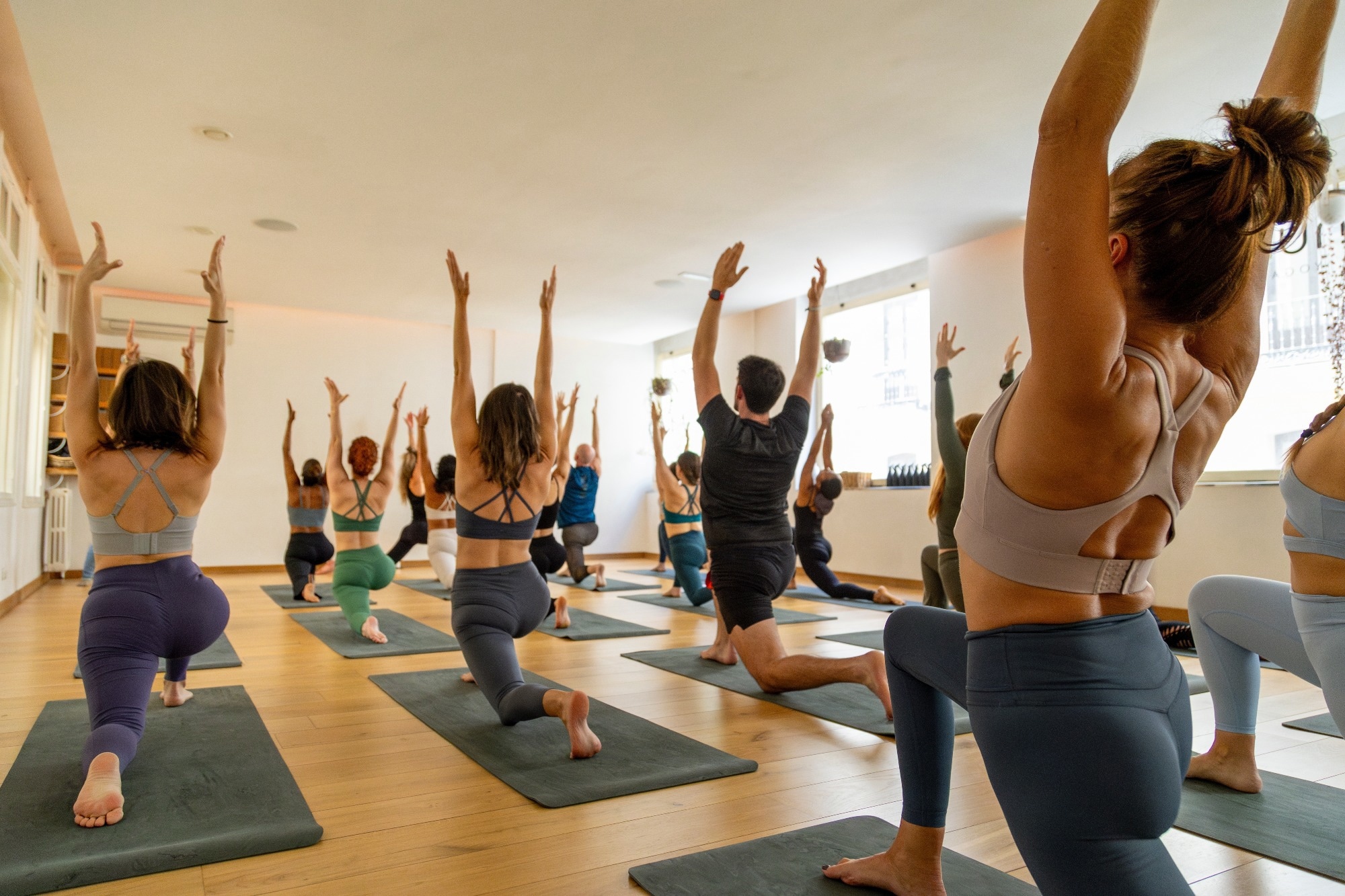A new review comparing yoga and exercise reveals that while both boost vascular function, structured workouts deliver stronger heart health benefits, offering insights for anyone looking to counteract the effects of too much sitting.
 Study: Comparing the effects of yoga and exercise on vascular function: A systematic review. Image Credit: Luis Rojas Estudio / Shutterstock.com
Study: Comparing the effects of yoga and exercise on vascular function: A systematic review. Image Credit: Luis Rojas Estudio / Shutterstock.com
A recent study published in Advances in Integrative Medicine compares the effects of physical exercise and yoga on cardiovascular function.
Sedentary lifestyles threaten public health
In 2022, over 31% of adults throughout the world did not meet physical activity guidelines, with most adults remaining sedentary for eight hours every day. Sedentary behavior includes any wake activities that are performed while sitting or reclining, some of which include desk work, driving, and screen use.
Prolonged sitting and other forms of sedentary behavior is associated with higher fasting insulin and adverse lipid profiles, as well as altered endothelial function. In fact, some studies suggest that sitting for eight hours or more every day increases the risk of mortality by 60%.
Poor vascular function refers to impaired endothelial health and increased stiffness of the arterial wall. Upon ultrasound imaging, these patients often exhibit reduced flow-mediated dilation (FMD), increased pulse wave velocity (PWV), and altered carotid intima-media thickness (cIMT), all of which increase the risk of cardiovascular disease.
Both conventional exercise and yoga can reduce arterial stiffness and improve endothelial function in sedentary individuals, in addition to supporting strength, flexibility, balance, and mobility.
Yoga, in particular, is an easily accessible form of physical activity that often requires little equipment or space. Conversely, conventional exercise may require access to facilitate or structured programs, which can require transportation and raise safety concerns.
The current systematic review synthesized findings from ten studies evaluating the effects of yoga and conventional exercise on vascular function, as measured by ultrasound imaging, in sedentary adults.
Study findings
The researchers reviewed a total of ten studies, with yoga and physical exercise equally represented. The average duration of yoga sessions was between eight and 12 weeks at a frequency of two or three sessions each week. The results were contradictory, with some reporting better endothelial function after yoga, whereas other studies did not report any changes.
The five exercise interventions included the martial art tai chi, reformer Pilates, high-intensity interval training (HIIT), or taking microbreaks from long sitting sessions. All sample cohorts were small, with the largest study including 40 participants.
Yoga-based studies reported some improvements in endothelial function among older adults. However, no consistent reduction in arterial stiffness was observed, corroborating previous studies.
The cardiovascular benefits of yoga may be attributed to controlled breathing and mental calmness during meditation, which could influence neurohumoral pathways affecting vascular function. Yoga may also increase heart rate and systolic blood pressure variability, both of which reflect improvements in autonomic regulation of the blood vessels and respiratory function.
Exercise typically improved vascular function, as measured by FMD and arterial stiffness. Improved (rather than reduced) FMD values were observed after tai chi and reformer pilates, whereas arterial stiffness was reduced after HIIT, especially for people who lived in cold environments. This may lead to vasoconstriction that is relieved by exercise-induced vasodilation.
Shear stress is caused by blood flow past the endothelial lining, which subsequently increases nitric oxide production, leading to vasodilation and lower blood pressure levels. Shear stress also reduces inflammation and inhibits clot formation, both of which are characteristic features of atherosclerosis. Overall, increased shear stress after physical exercise improves vascular responses to increased physiological demands.
In contrast, short breaks between sessions of prolonged sitting had little benefit. Thus, there is a threshold intensity and duration below which exercise does not provide a significant benefit for vascular health.
Older and middle-aged adults were more likely to exhibit improved endothelial function than younger people. This association could be attributed to greater baseline risk among older adults. Yoga session duration, frequency, and intensity may also modulate the effectiveness of this intervention.
Differences between studies may have affected these findings, thereby reducing their generalizability. Thus, future studies with larger sample cohorts that use standardized protocols are needed to confirm these observations and elucidate their underlying mechanisms.
The feasibility, acceptability, and cost-effectiveness of both interventions should be examined in the future. Long-term follow-up is also needed to clarify the durability of these improvements.
Conclusions
Conventional exercise is more effective in improving vascular function than yoga among people with sedentary lifestyles. Although yoga may provide health benefits for older people who cannot safely participate in other forms of exercise, it does not appear to reduce arterial stiffness in this patient population.
The authors conclude that both interventions may offer complementary benefits when tailored to age, intensity, and baseline vascular health.
Journal reference:
- Paramashiva, P. S., Sukumar, S., Shettigar, D., et al. (2025). Comparing the effects of yoga and exercise on vascular function: A systematic review. Advances in Integrative Medicine. doi:10.1016/j.aimed.2025.100556.